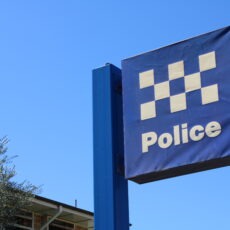Narrabri and District Chamber of Commerce has supported calls for further independent study into the current Inland Rail route.
The chamber successfully passed a motion to that effect at its monthly meeting last week.
The decision followed a presentation by local engineer Jim Purcell who outlined an alternative route and the benefits it could deliver the rail freight development as well as his perceived flaws of the current alignment which would skirt around the western outskirts of Narrabri, passing over Wee Waa Road.
In addition to supporting an independent study, the chamber also agreed to write a letter in support of lobbying efforts of the Narrabri Inland Rail Concerned Residents group.
The group was initially formed by Mr Purcell as well as Narrabri locals Ross Gleeson and Tim Logan. It is lobbying to see the route changed to an alignment it says makes better economic sense.
Mr Purcell delivered last week’s presentation to a well-attended meeting that consisted of various businesses and industries in the Narrabri area.
Mr Purcell detailed the benefits of an alternative route.
He told chamber members the different route would only require five bends compared to the current alignment’s 20.
Thirteen dwellings would be impacted compared to 98 in the current route.
Mr Purcell said the alternative route would also pass through flat terrain, unlike the current alignment which goes over Knight’s Hill opposite the Plant Breeding Institute.
He said the group’s proposed route would also eliminate the need for some of the bridges along the current alignment, including a 4.9-kilometre viaduct which would run across Wee Waa Road, The Island Road and Yarrie Lake Road.
“The alternative route will not require the use of Gibbons Street,” Mr Purcell said.
Mr Purcell said the use of the street for the current route’s construction works was of particular concern given its busy nature with the hospital as well as aged care and childcare facilities calling Gibbons Street home.
Following Mr Purcell’s talk, many questions came from the floor in regards to the group’s proposed route.
Mr Purcell acknowledged that ARTC faced a difficult job.
“No matter where the line goes, someone will be affected,” he said.
“But it can’t be set because this person might be affected or that person might be affected.
“It needs to be the best route.”
To order photos from this page click here










